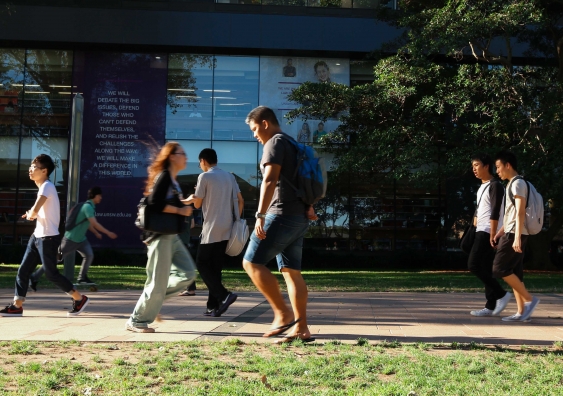International students are good for Australia

Former prime minister Tony Abbott once saluted Robert Menzies as the “expander of universities, inspirer of the Colombo Plan”, and “a colossus we might never see again”.
Fitting words about a prime minister who in the higher education realm is remembered as a champion of universities at large, and a trailblazer in international education who has bequeathed Australia a $32 billion success story.
Yet suddenly, amid the most recent debates on immigration and higher education, capping international student numbers has become a hot topic. What is the basis for this and is it a good idea?
Some of the recent debate has been couched in terms of protecting local jobs. But the facts don’t support this argument. While youth unemployment sits at 11%, Australia’s overall unemployment remains at near record lows, with the fundamentals of our labour market remaining robust over many years.
The logic of the naysayers goes something like this: International students are behind what Opposition Leader Bill Shorten recently called an “out of control” spike in temporary work visas and some would contend are at the heart of a sinister plot to remain permanently in Australia and use a student visa as a pretence to seek employment and thus undermine the ability of Australians to find a job.
The facts, however, go something like this: Deloitte Access Economics modelling shows that export revenue from international students supports more than over 130,000 full-time jobs in the wider Australian economy. This data was based on 2014-15 results which placed the overall economic value of international education at $19.7 billion. The latest results point to the sector contributing $32 billion to our economy, and it seems only reasonable to assume that even more full-time jobs have been created as the sector continues to grow.
The jobs created by international education spread far more widely than just the academic and professional workforces that are directly employed in teaching and supporting international students. More than half of what international students spend in the wider economy goes to goods and services outside of their core education while they are in Australia.
Research from Tourism Research Australia, for example, points to a big impact from international education on the nation’s tourism, with 2018 data indicating one in seven tourists are in the Visiting Friends and Relatives (VFR) category, visiting a student or relative studying in Australia.
Tourism is often the lifeblood of regional labour markets across Australia. In Tropical North Queensland, for example, tourism employs 18,700 people, with 20% of all jobs in the region directly related to the sector. Imagine what fewer parents visiting their Indian or Chinese children studying here over Diwali or Chinese New Year would mean for the livelihoods of these communities.
And what about the tendency of international students to remain in Australia after their studies? Surely students must be lured by the whiff of permanent residency and a well-paid graduate job? Data from the Department of Home Affairs released last week shows that five out of six international students pursue employment internationally upon completion of their studies. The most recent data is also borne out by statistics spanning the course of this century indicating that only 16% of international students secured permanent residency.
And why wouldn’t a typical international student, generally from the Indo-Pacific region, armed with a globally recognised Australian qualification and a sophisticated intercultural understanding, elect to pursue employment in one of the rapidly growing Asian economies on our doorstep?
All of this is to say nothing of the intangible cultural endowment international students offer our society and the people-to-people relationships which will position Australia for prosperity for decades to come. Foreign Affairs Minister Julie Bishop recognised this when she unveiled Australia’s Global Alumni Engagement Strategy to harness the power of 2.5 million international student alumni to “grow trade, investment and business linkages” and “extend the reach and impact” of Australia’s diplomatic network.
Each university will always have its own goals and vision, and it is inevitable some will strike a different domestic-to-foreign student balance based on its overall strategy, heritage and performance. The Australian National University has announced it will maintain its current ratio by halting further domestic and international enrolments, but many others are seeking to increase and diversify their student mix and funding sources.
The Australian government understands this and it is why university autonomy has been the cornerstone of our university system for decades, enabling Australia’s universities to recruit international students and position the country with more higher education institutions in the top 100 on a per capita basis than just about any country on Earth.
Calls for a cap on international students are unfounded and put at risk a major driver of Australia’s prosperity, potentially leading to the demise of a colossus which, indeed, we might never see again.
This article was also published in The Australian and is republished via UNSW. Read the original article.
Laurie Pearcey is Pro-Vice-Chancellor (International) at UNSW Sydney. Laurie is responsible for developing the global impact pillar of UNSW’s 2025 Strategy. Appointed to his current position at 33, Laurie is the youngest Pro Vice-Chancellor in the Australian higher education sector.













